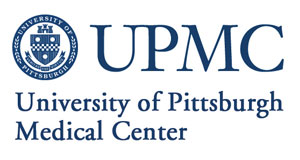Changing Patterns of Candida Infections in Urban Medical Centers
| Status: | Completed |
|---|---|
| Conditions: | Infectious Disease |
| Therapuetic Areas: | Immunology / Infectious Diseases |
| Healthy: | No |
| Age Range: | Any |
| Updated: | 6/14/2018 |
| Start Date: | August 2006 |
| End Date: | June 2017 |
Changing Patterns of Candida Infections in Urban Medical Centers: Emphasis on the Emergence of Non-albicans Species and Their Influence on Clinical Outcomes
The purpose of this study is to determine the changing patterns of infection caused by
Candida species in urban medical centers and its influence on patient outcomes. A
retrospective cohort study design will be employed with the main outcome measure being
hospital mortality. Secondary outcomes including microbiologic clearance of the infection,
duration of hospitalization, and the intensive care unit (ICU) length of stay will also be
assessed.
Candida species in urban medical centers and its influence on patient outcomes. A
retrospective cohort study design will be employed with the main outcome measure being
hospital mortality. Secondary outcomes including microbiologic clearance of the infection,
duration of hospitalization, and the intensive care unit (ICU) length of stay will also be
assessed.
The following information that was collected as part of the patient's clinical treatment will
be collected: age, sex, occupation, hospital location at the time of positive culture (ER,
medical ward, ICU, etc.), prior hospitalization, receipt of outpatient dialysis, home care or
other regular medical care (eg, outpatient chemotherapy), presence of invasive devices,
receipt of antibiotics, including their type and whether they were adequate for the
resistance profile of the organism, prior positive microbiologic cultures, time and location
of positive cultures, underlying diseases and severity of illness, presence of urinary or
intravascular devices, recent immunomodulative therapies or radiation therapy, physical exam
findings, laboratory and radiographical data, antimicrobial usage within 30 days of onset of
the infection, microbiological data and resistance patterns, choice of antibiotics once
organism identified, bacteriological outcomes, laboratory results, demographic information,
medications, clinical outcome, gender, height, weight, ethnicity, and past medical history.
We will collect information retrospectively.
be collected: age, sex, occupation, hospital location at the time of positive culture (ER,
medical ward, ICU, etc.), prior hospitalization, receipt of outpatient dialysis, home care or
other regular medical care (eg, outpatient chemotherapy), presence of invasive devices,
receipt of antibiotics, including their type and whether they were adequate for the
resistance profile of the organism, prior positive microbiologic cultures, time and location
of positive cultures, underlying diseases and severity of illness, presence of urinary or
intravascular devices, recent immunomodulative therapies or radiation therapy, physical exam
findings, laboratory and radiographical data, antimicrobial usage within 30 days of onset of
the infection, microbiological data and resistance patterns, choice of antibiotics once
organism identified, bacteriological outcomes, laboratory results, demographic information,
medications, clinical outcome, gender, height, weight, ethnicity, and past medical history.
We will collect information retrospectively.
Inclusion Criteria:
- All hospitalized patients with a positive blood culture for Candida will be eligible.
Exclusion Criteria:
We found this trial at
1
site
University of Pittsburgh Medical Center UPMC is one of the leading nonprofit health systems in...
Click here to add this to my saved trials
